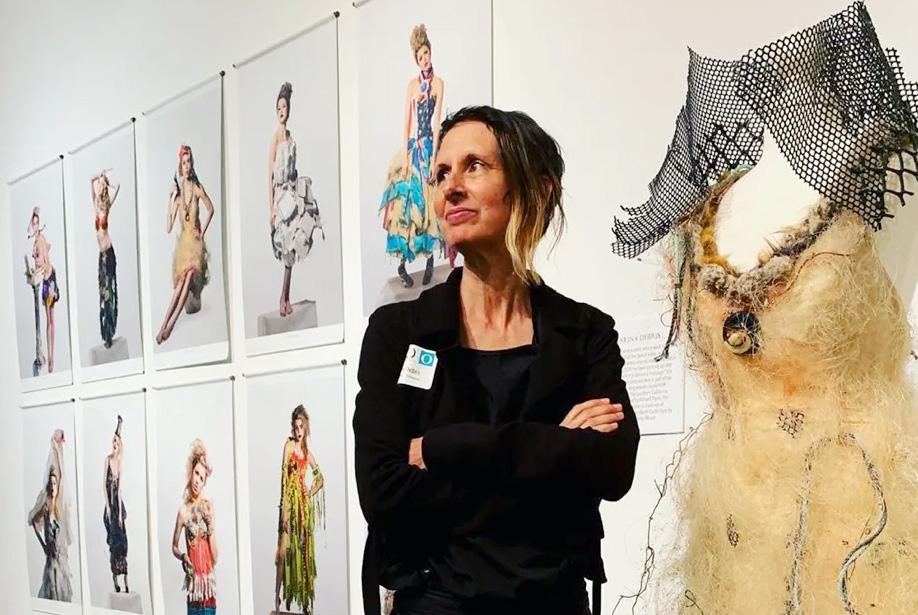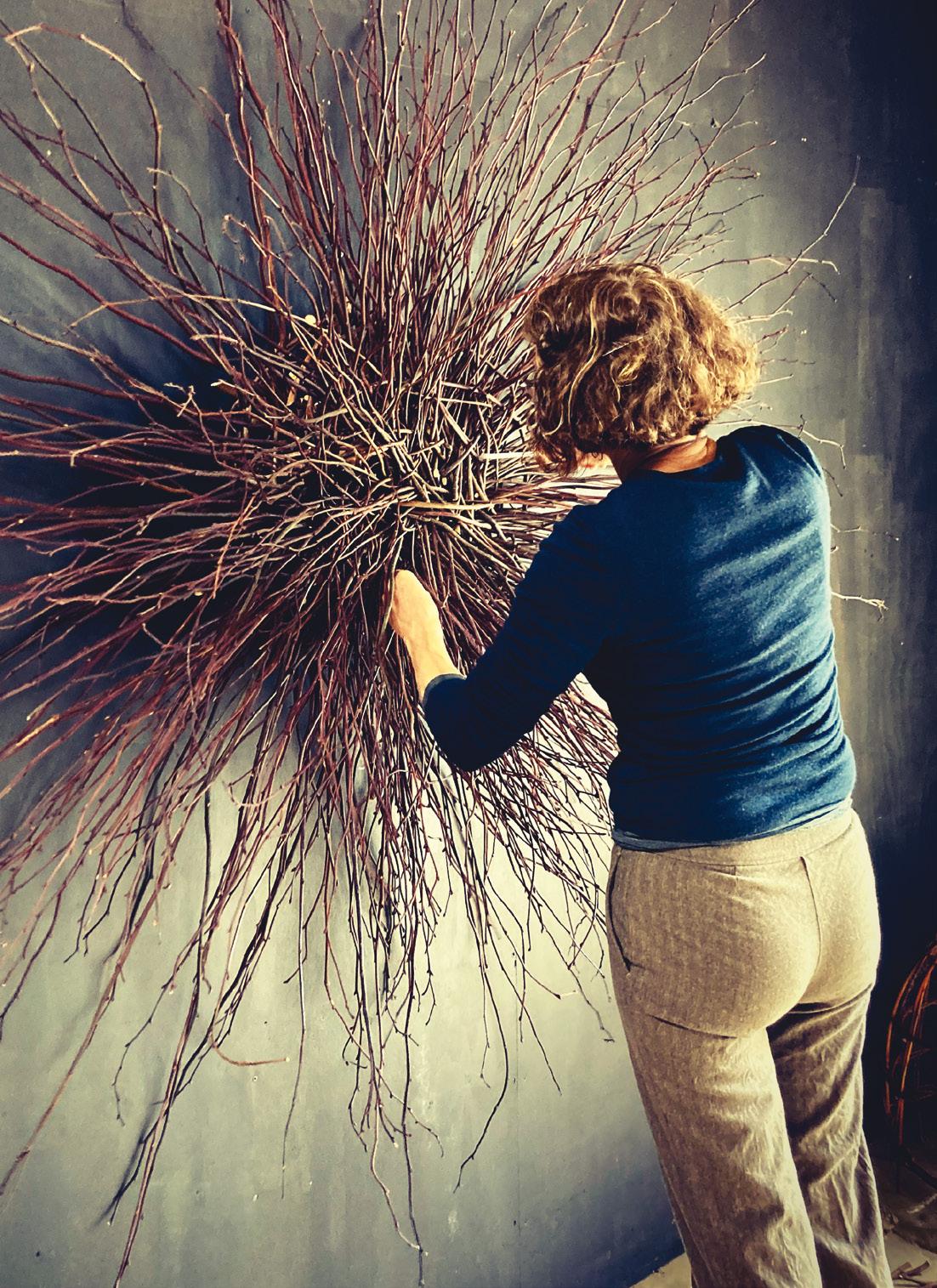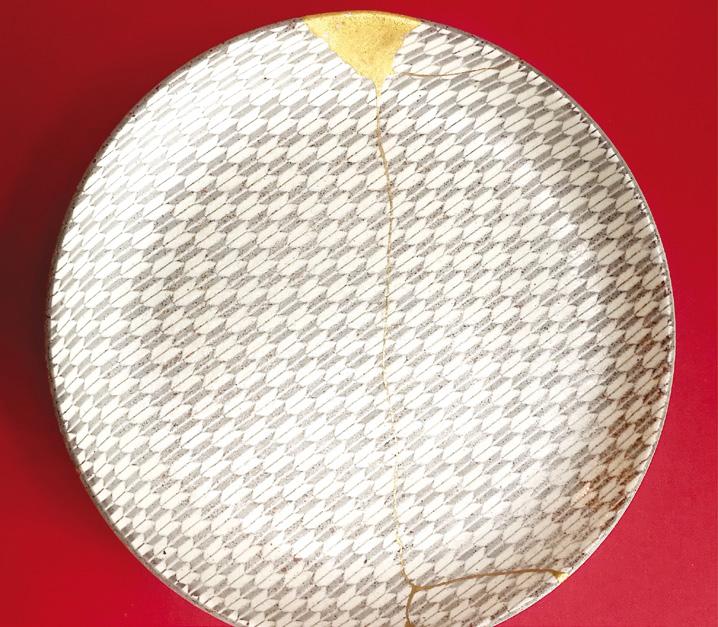
5 minute read
Transformation
THE KISS OF LIFE
AS THE WORLD STRUGGLES UNDER THE WEIGHT OF WASTE, ECO ARTISTS ARE FINDING INSPIRATION IN MATERIALS OTHERS IGNORE OR DISCARD. SUE WANNAN REPORTS ON FOUNDATION & FRIENDS’ NEWEST EXHIBITION.
Advertisement
Most of us are regularly considering how to reuse, repurpose or upcycle common items that might otherwise end up in landfill or the oceans. But the innovative artists selected to take part in Transformation – which opens at the Royal Botanic Garden Sydney in August – cast a wider net.
Marina DeBris, for instance, combs Sydney beaches for raw materials for her creations. For all their playful whimsey, don’t be fooled – this is a woman who’s been serious about the problem of sea and beach pollution for 20 years. She has an international reputation and recently had a solo show at the Australian National Maritime Museum.
Peter Rush is another established artist known for his works from organic beach detritus. Much of his work lasts only for a week or two before decomposing, but at Transformation you’ll see one of his renown horses made from driftwood.
Eco artistry is not just intriguing, beautiful, transformative – it’s also about showing concern for the environment and encouraging the rest of us to adapt to a better future.
“One of the main characteristics of this style is that it’s not limited to any discipline,” says curator Robbie Macintosh. “We can find recycled art in wall art, sculpture, haute couture or in furniture. This type of art seeks to transform wastepaper, cardboard, wood, glass, plastics, metal, rubber, discarded and found objects into works of art which hopefully awaken our consciences.
“Jody Graham found burnt sticks after the fires and used them to draw amazing birds. Dave Smith rescues skateboards and turns them into useable items such as bowls, knife handles, cake stands and chopping boards. Rae Harvey, a textile artist from Canberra, has a passion for using old kimonos to create beautiful wearable art”.
Sally Jackson and Kerry Brack – recent University of Technology Sydney masters graduates whose works will be displayed at the Powerhouse Museum – will also offer wearable art. Sally, daughter of Tim Jackson, a long-time supporter and past President of the Friends, uses recycled fabrics, including her mother’s wedding dress, to generate custom-made couture. Her work has been recognised by Australian Vogue. In Transformation she will show preloved shirts decorated with beautiful embroidery.
Transformation – the art in recycle, is a clever idea whose time has come.
“As fashion designers of the future,” she told utsfashion.com, “it’s our responsibility to make conscious decisions on the way our designs impact the planet. I’m giving new life to textile waste.”
“I want people to be surprised and confronted (by my work). I love to have my perceptions shifted when I see art. If I can have this impact on someone and maybe even inspire behavioural change, that would be awesome.”
For a slightly different take on reuse, seek out Yoko Kawada’s beautiful work using kintsugi, an ancient Japanese art dating from the 16th century in which broken pottery is repaired using lacquer and gold. This unique technique recognises the beauty of imperfections. The process transforms much loved, worn items into a beautifully crafted, new piece of art. It’s a chance to live more sustainably and to rescue objects which would otherwise be discarded.
In an exhibition like this, it’s hard to single out who has the most ‘wow!’ factor, but there are two pieces visitors are likely to find especially arresting: a large organic sculpture by Tracey Deep and the extraordinary embroidery of Amanda Morglund of Mycelium Made fame.
Tracey has been described as a curator of nature. She transforms found objects, old industrial materials and bits and pieces of the natural world into beautiful works, heightening and celebrating their forms, textures and colours.
Jody Graham (photo by Graeme Wienand)
Marina DeBris


Rae Harvey (photo by Melissah White)

Penny Simons makes final adjustments to her artwork Spirit (photo by Ashley Mackevickius)
Her workshop in Redfern, said one admiring writer, is like an exquisitely beautiful graveyard for dead botanica. Her particular way of seeing things is recognised in many private collections. Her work for Transformation is, she says, a celebration of the Australian landscape, inspired by echidna quills, and made from wood rescued from landfill, which she has then charred.
Amanda’s embroidery uses mycelium (the fungal threads we’ve all been walking around on for years without knowing it) on velvet in a range of clothes and accessories. But she goes way further than that, investigating bioremediation applications of fungi.
“I’m currently breaking down cigarette pollution with my targeted strain of pollutant eating mushrooms,” she says. “The fungi decontaminate the toxins in the cigarette butts and produce a block of material that can be cultivated for packaging or insulation.
“With fungi we can recycle a vast amount of our waste sources including agricultural offcuts, textile waste and pollutants like tyres.”
Transformation will feature the work of nearly three dozen artists, featuring haute couture, textiles, jewellery, glass, woodwork and more.

Yoko Kawada
WORKSHOPS A series of engaging workshops will run in conjunction with the Transformation exhibition, featuring artists such as Catriona Pollard (random weave basketry). Jody Graham (burnt wood drawing) and Yoko Kawada (the Japanese art of kintsugi). For more details see this issue’s diary.

Tracey Deep (photo by Nicholas Watt)
1–14 AUGUST, 10AM–4PM
Lion Gate Lodge, Royal Botanic Garden Sydney Entry is free, and all works will be for sale, with the commission going towards maintenance in our three Botanic Gardens.
OPENING NIGHT, FRIDAY 31 JULY, 2PM–4PM Join the Transformation curators and guest speaker Dr Tim Schork. Dr Schork is an Associate Professor in the School of Architecture at the University of Technology Sydney, where he co-founded and co-leads the Transformative Technologies & Data Poetics Research Group. Work from Dr Schork’s students – items made with 3D printers using filament made from recycled material – will be on display at Transformation. Enjoy a drink and canapés in the beautiful Garden, and take the opportunity to view and purchase works before the exhibition opens. Members $55, Non members $65. Bookings are essential. Tickets are available from rbgsyd.nsw.gov.au/transformation










